SyrusJS based Apps/Instances
SyrusJS is an embedded application inside the Syrus 4 which manages a SyrusLang configuration based in files that provides configurable signals, events, and actions to meet our users needs.
Please refer to the following link to discover all the possibilities of SyrusJS:
SyrusJS - SyrusLang
When you use SyrusJS you have 3 options to run an application into the Syrus4.
Option #1 - Via SyrusCloud.
To use this option you need access to Syrus Cloud and follow these steps:
-
Create the configuration files based on your needs:
destinations.syrus.conf based on this link SyrusLang Destinations
configuration.syrus.conf based on this link SyrusLang Configuration -
Enter into the Syrus Cloud and go to the application section.
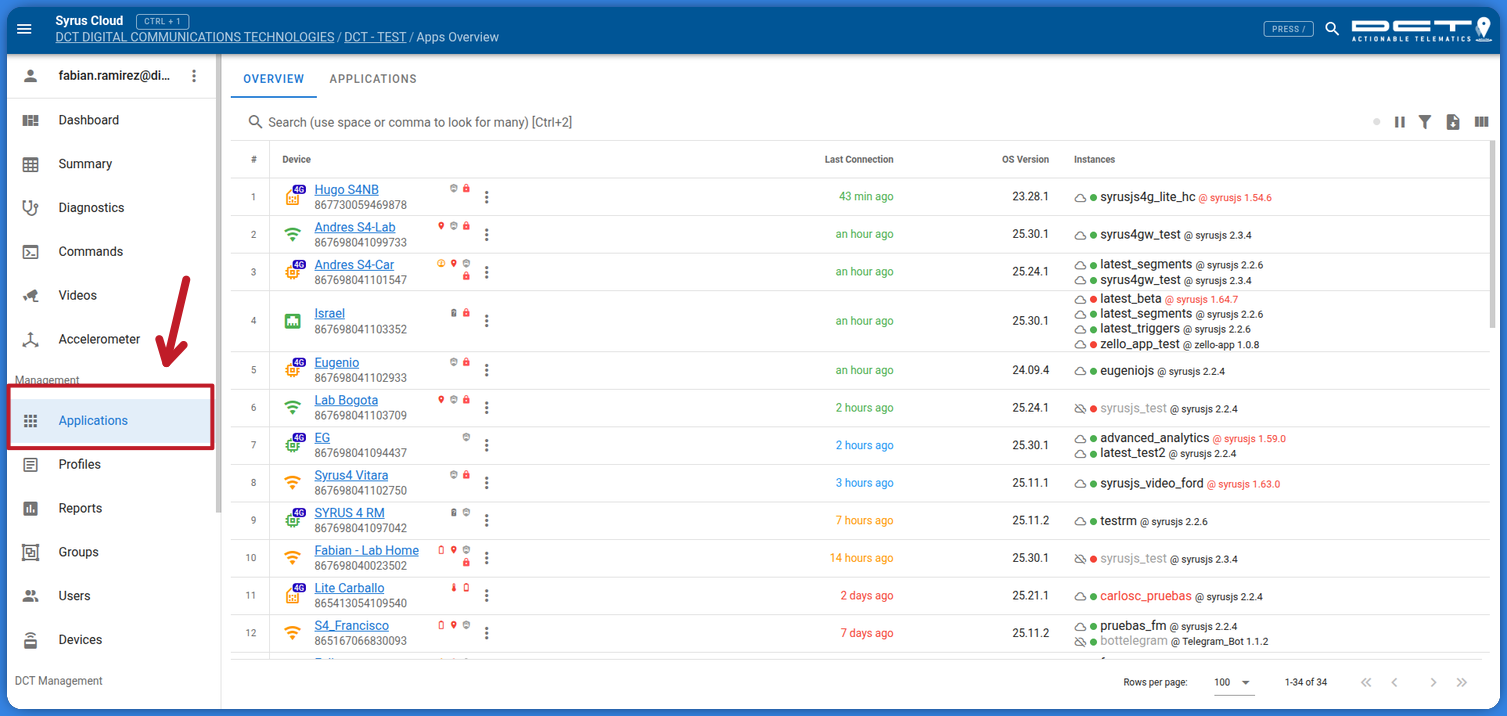
Here you will find 2 section the OVERVIEW that shows your group devices and what application these have installed, active or inactive, and the APPLICATIONS that shows the SyrusJS instances created.
-
Go to the APPLICATIONS tab and click on DEFINE INSTANCE.
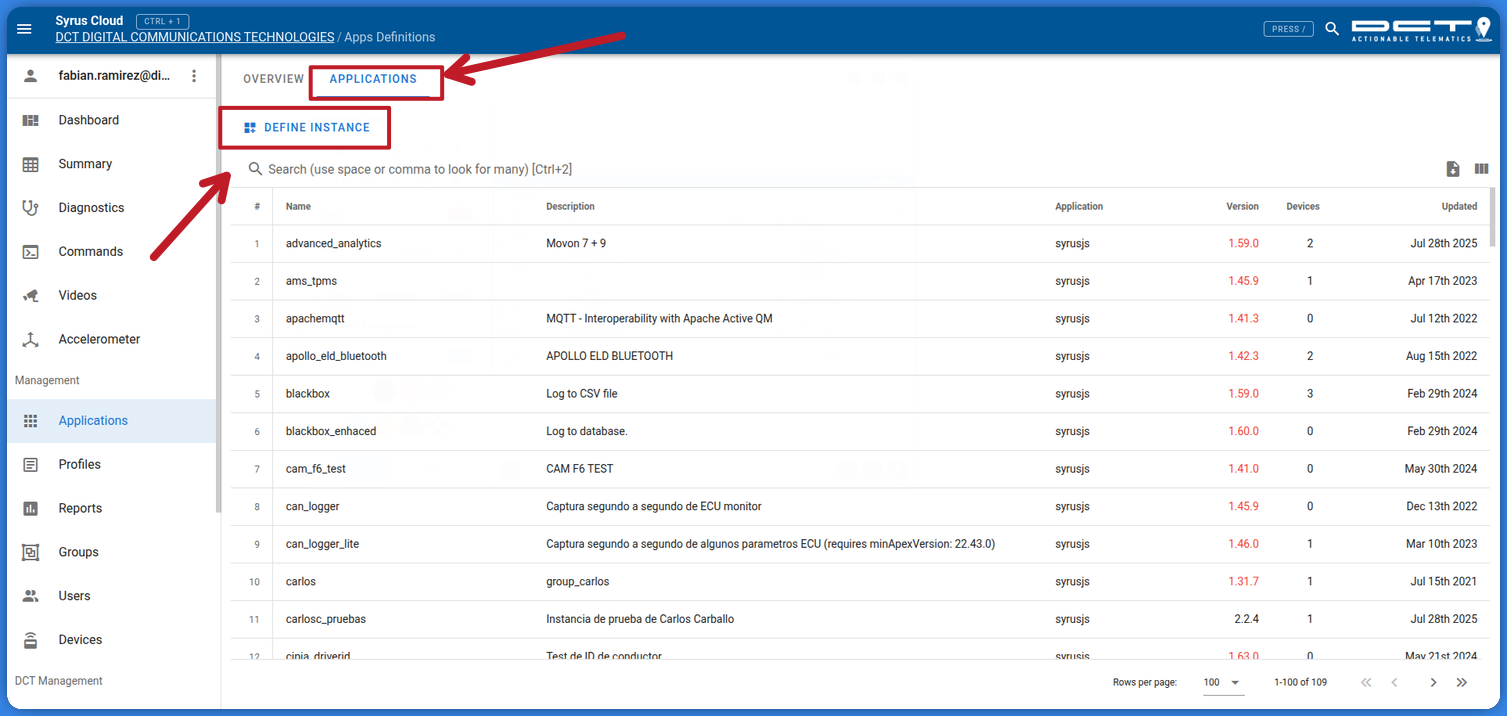
-
Select your preferred SyrusJS version, fill the requested data and create or draw & drop your configuration files.
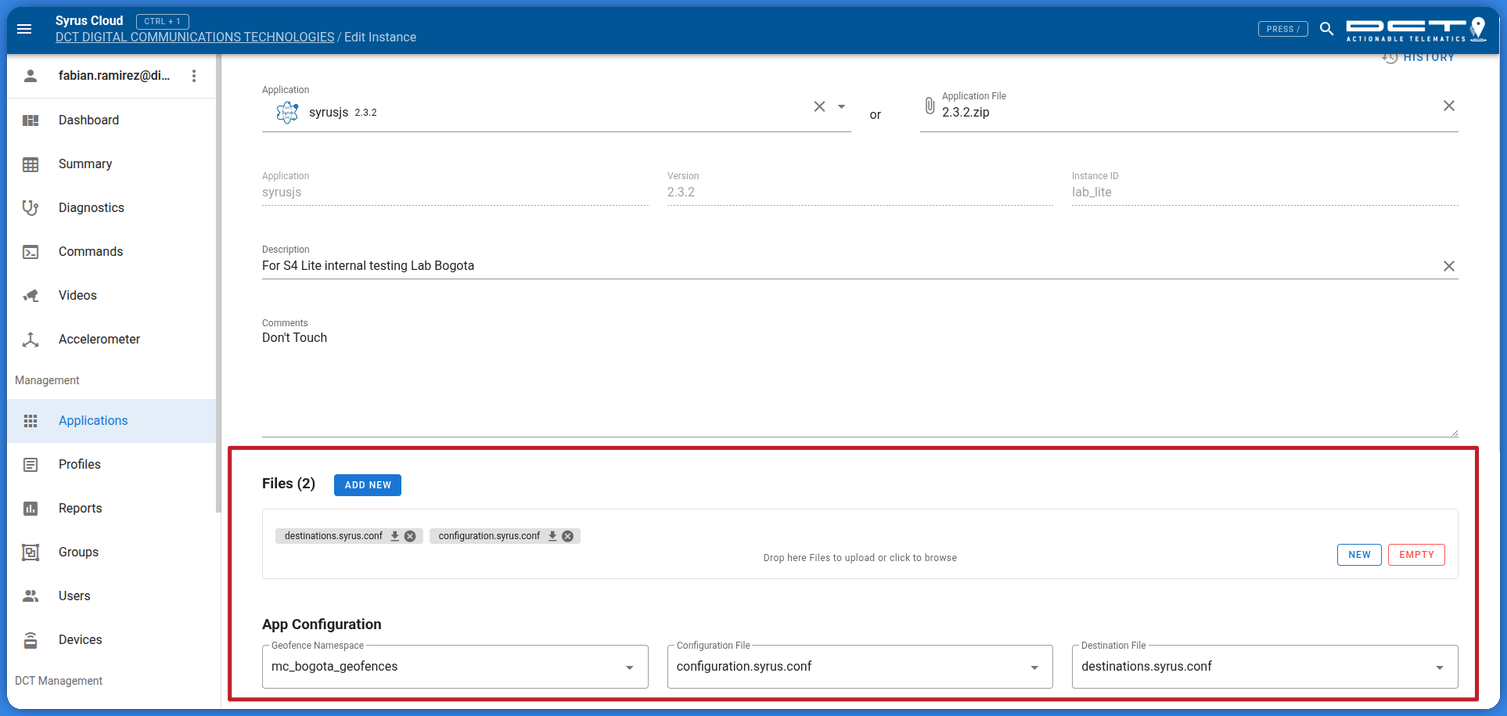
-
Add you device and save to upload the changes.
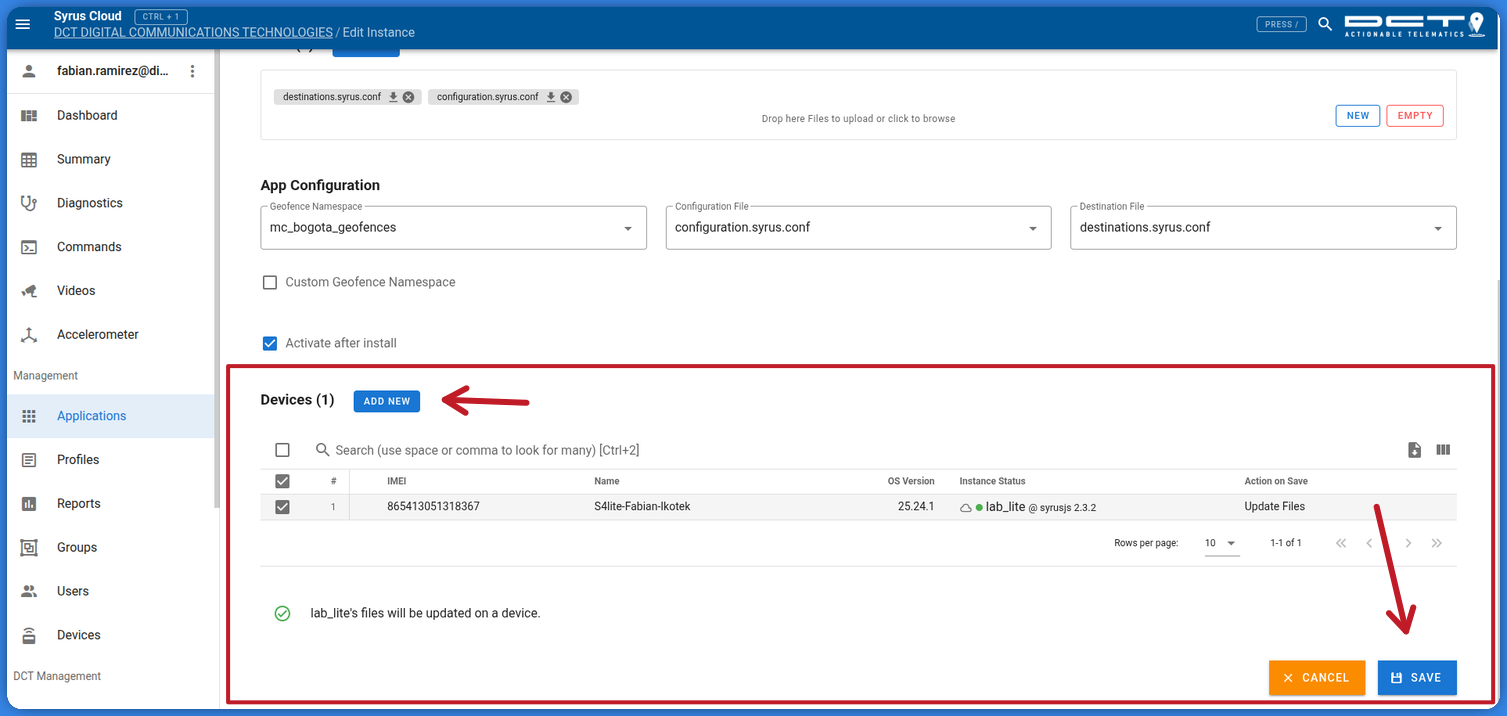
-
Go to the summary, find you device(s) and on the COMM tab check the update status.
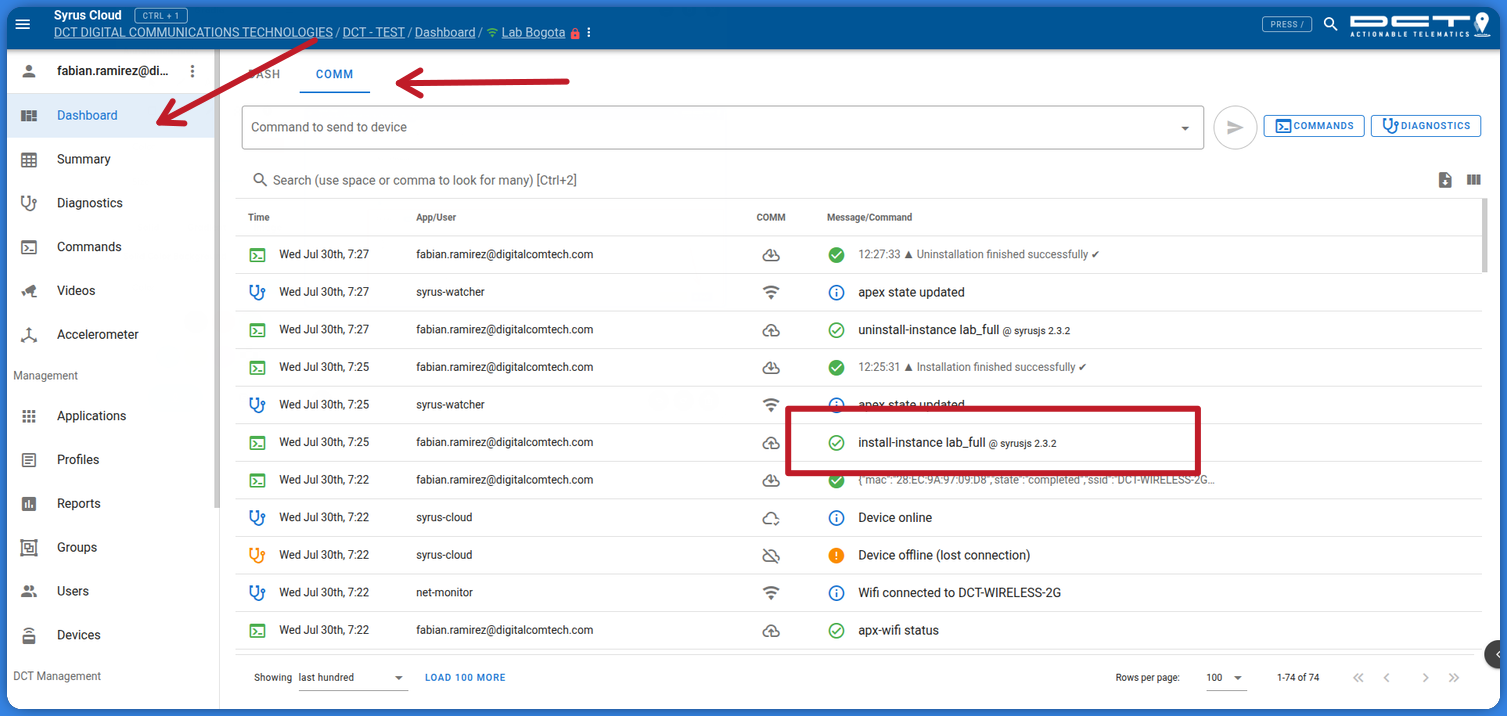
Option #2 - Using Management Tool
-
Create the configuration files based on your needs:
destinations.syrus.conf based on this link SyrusLang Destinations
configuration.syrus.conf based on this link SyrusLang Configuration
.configuration.json based on the following JSON:{"configuration_file":"configuration.syrus.conf","destination_file":"destinations.syrus.conf","namespace":""} -
Enter into the management tool and go to the applications section.
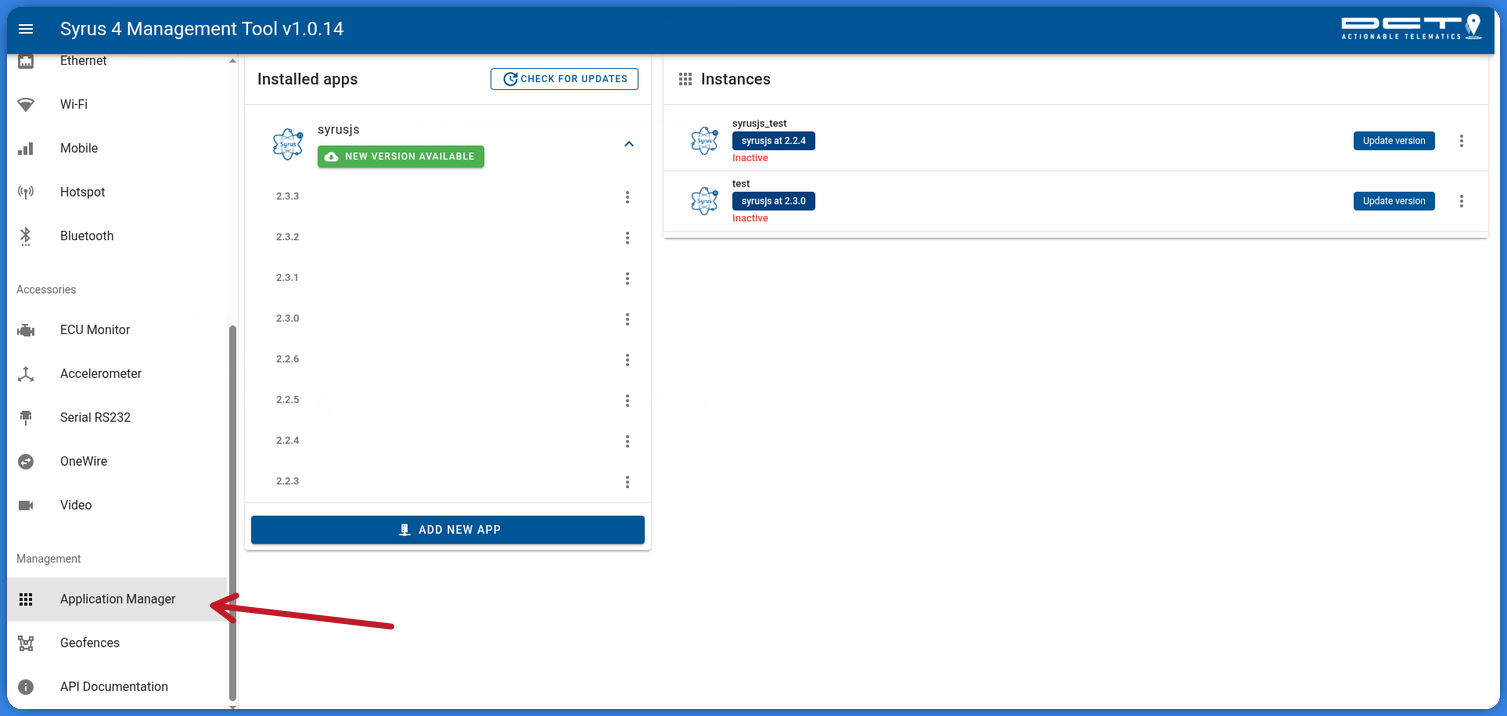
-
Click on the 3 points of the SyrusJS version you need, select create instance and name it.

-
Once a instance and you see it in the instances list, go to the Files Browser section and go to
PATH: /data/app_data/[instance_name]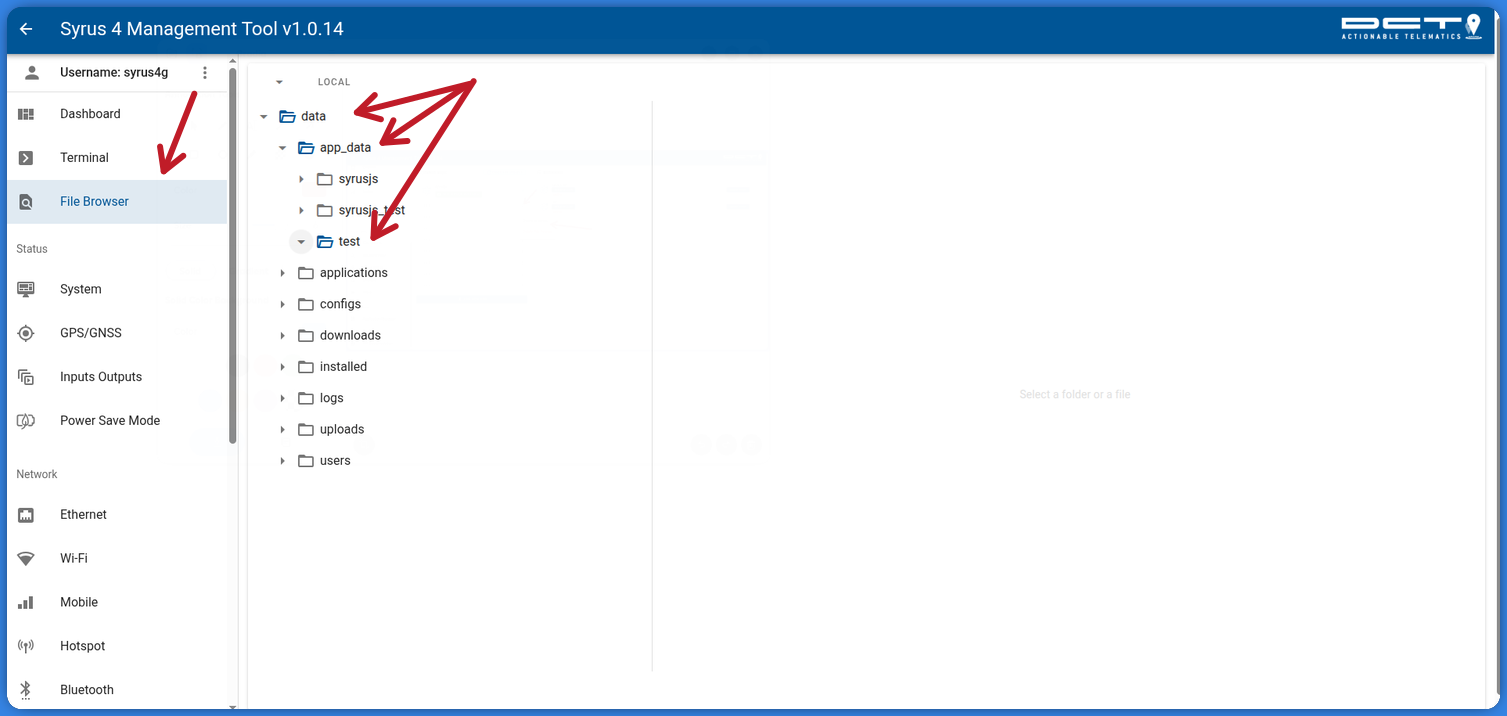
-
Click the upload icon and find the 3 config files.
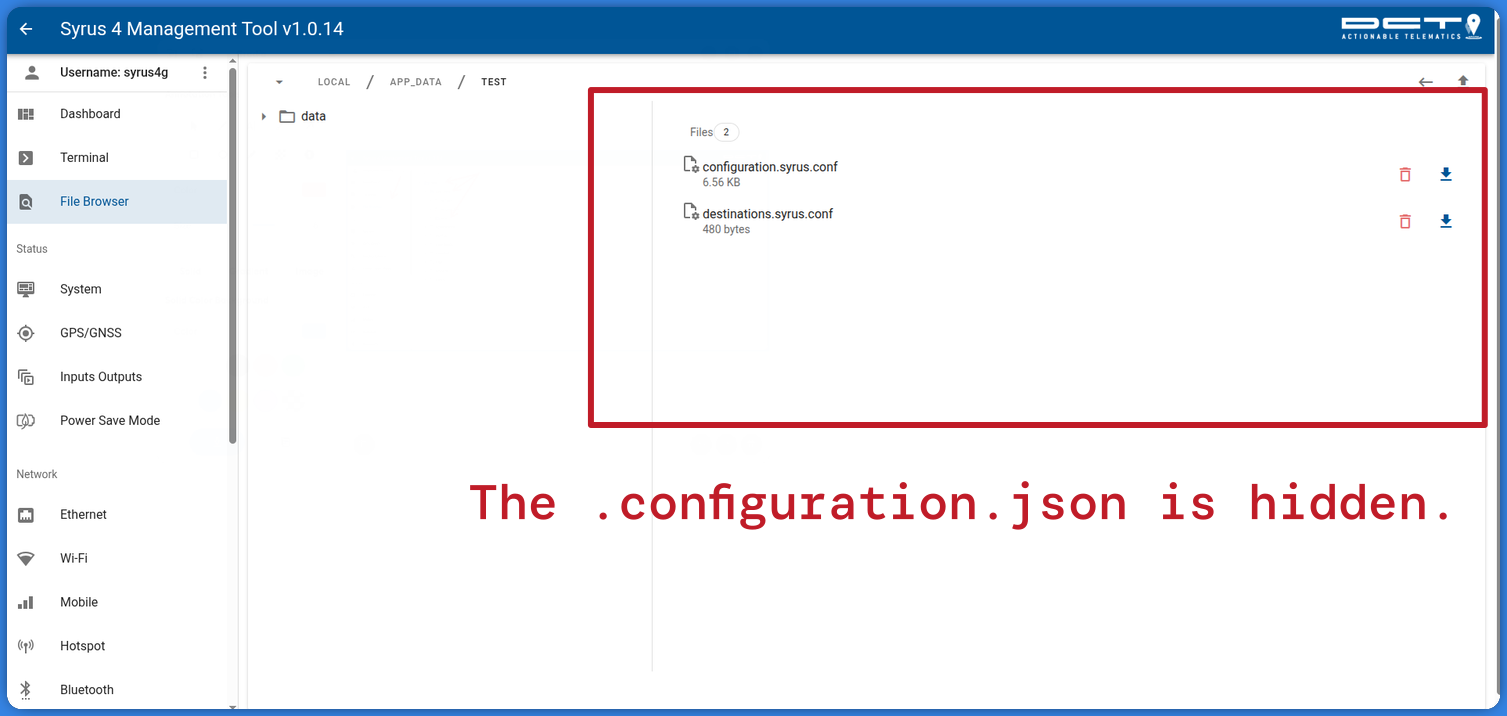
-
Go back to the application section and start the instance.
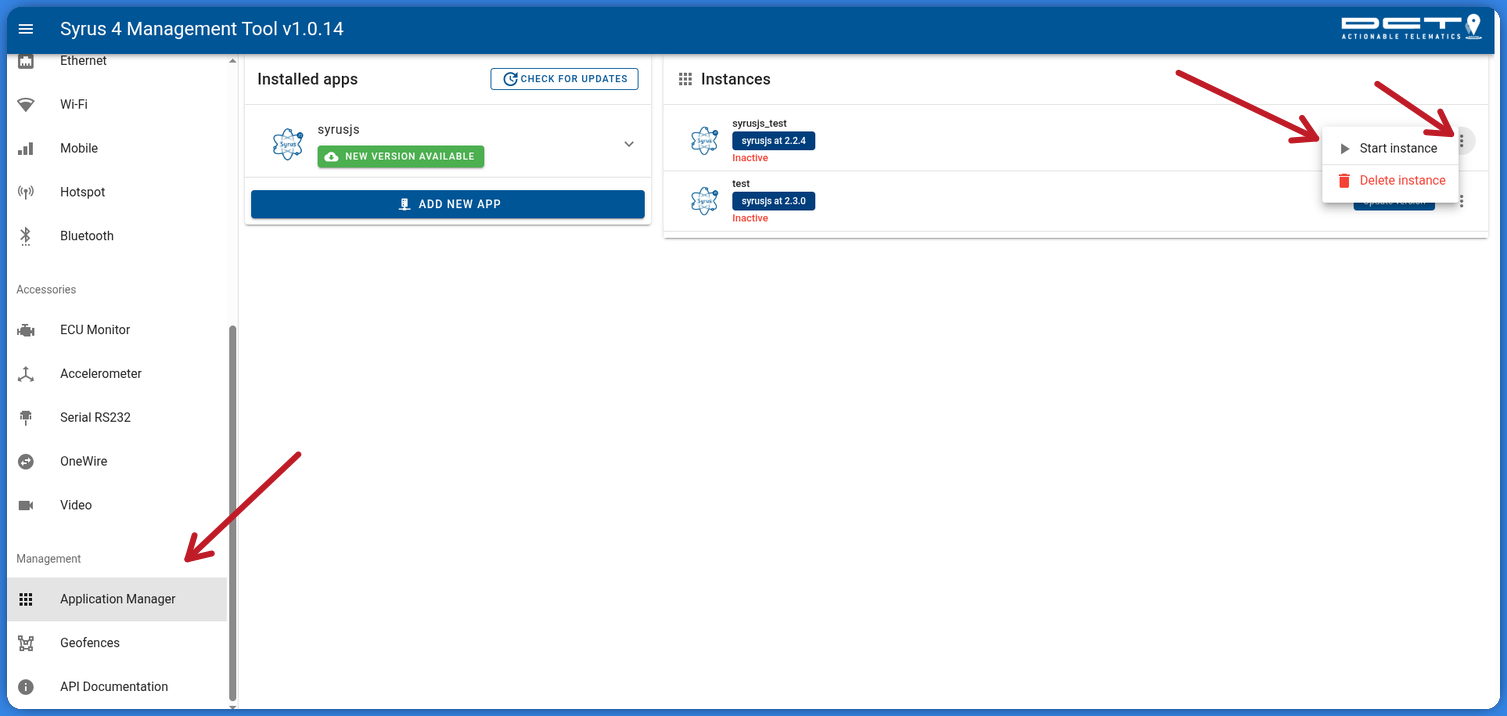
Option 3 - Via terminal.
-
Create the configuration files based on your needs:
destinations.syrus.conf based on this link SyrusLang Destinations
configuration.syrus.conf based on this link SyrusLang Configuration
.configuration.json based on the following JSON:{"configuration_file":"configuration.syrus.conf","destination_file":"destinations.syrus.conf","namespace":""} -
If don't have the SyrusJS app installed in the version you need, download and install with the following command (this command automatically installs the app):
#Example: syrus-apps-manager download-app syrusjs 2.3.2 syrus-apps-manager download-app syrusjs [version] -
Create the instance for the previous SyrusJS app installed with:
#Example: syrus-apps-manager create-instance my_app syrusjs 2.3.2 syrus-apps-manager create-instance [instance_name] syrusjs [app_version] -
Upload this files with the management tool (see the opt # 2) or with the SyrusCloud into the instance folder:
#Example: /data/app_data/my_instance PATH: /data/app_data/[instance_name]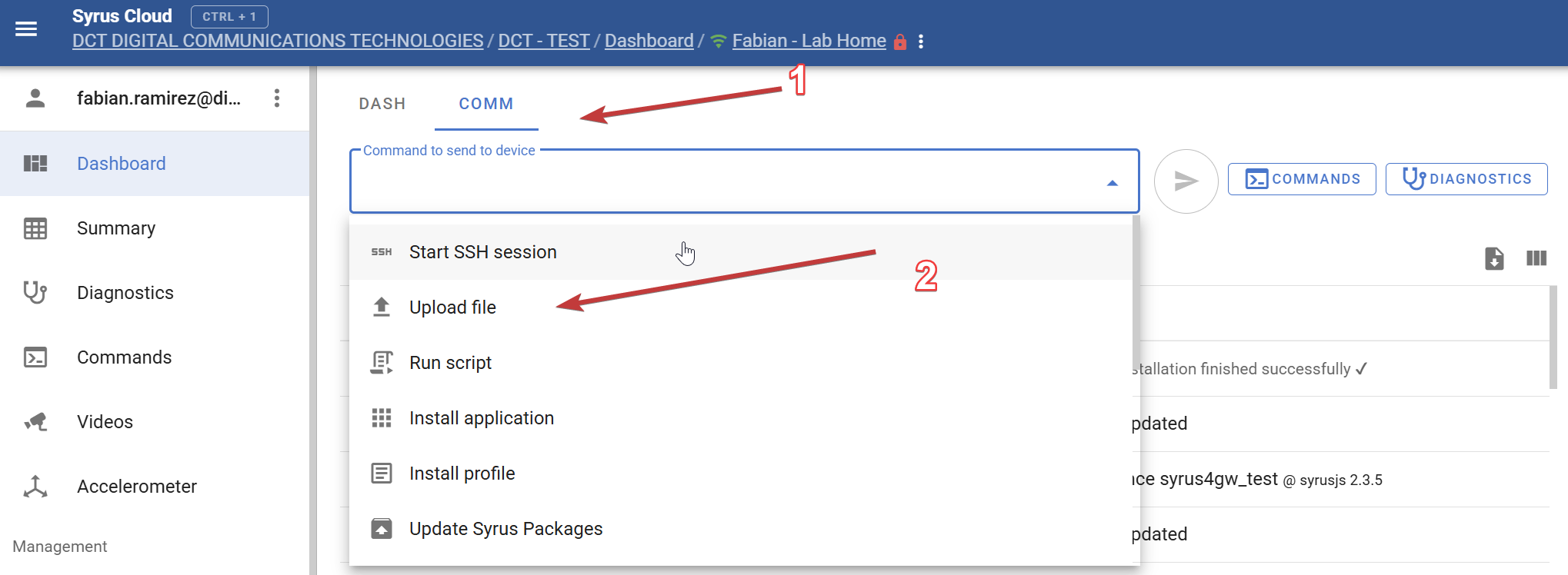

-
Start your new instance with the following command:
syrus-apps-manager start my_app
Instances ManagementUse the syrus-apps-manager tool to manage your instances and apps.
syrus-apps-manager commands:
help Show this help message. install-app <zip_path> Install an app from a .zip file on the device. update-app <app> [ver] Update an app to a new version from its repository. download-app <app> [ver] If [ver] is omitted, downloads the stable version if available. list-apps List installed apps on the device. delete-app <app> <ver> Delete a specific version of an installed app. check-updates Check for updates for all apps with a repository in their manifest. list-instances List all running app instances on the device. create-instance <name> <app> <ver> Create a new instance from an installed app. update-instance <name> <ver> Update an instance to a different version. delete-instance <name> Delete an instance. start <instance> Start a specific instance. stop <instance> Stop a specific instance. restart <instance> Restart a specific instance. status <instance> Show the status of a specific instance. get-running List only running instances. send-message Send a message (via nc) to applications exposing a Unix socket. start-shell Start a shell (via nc) with applications exposing a Unix socket. i.e. syrus-apps-manager send_message _myinstance 'set .foo false' clear-buffer <name> <dest> Clear the buffer of an instance.
Updated about 2 months ago
